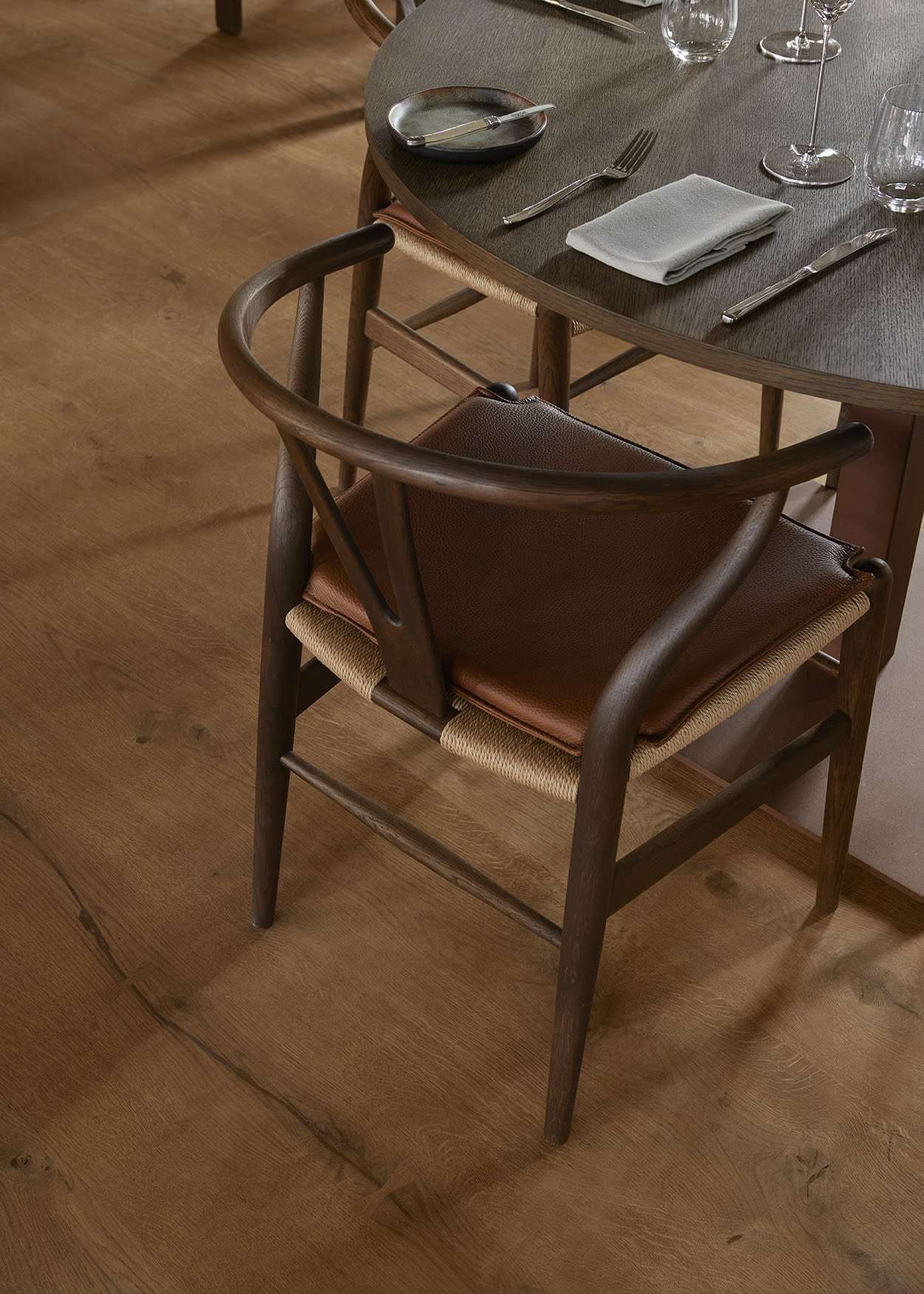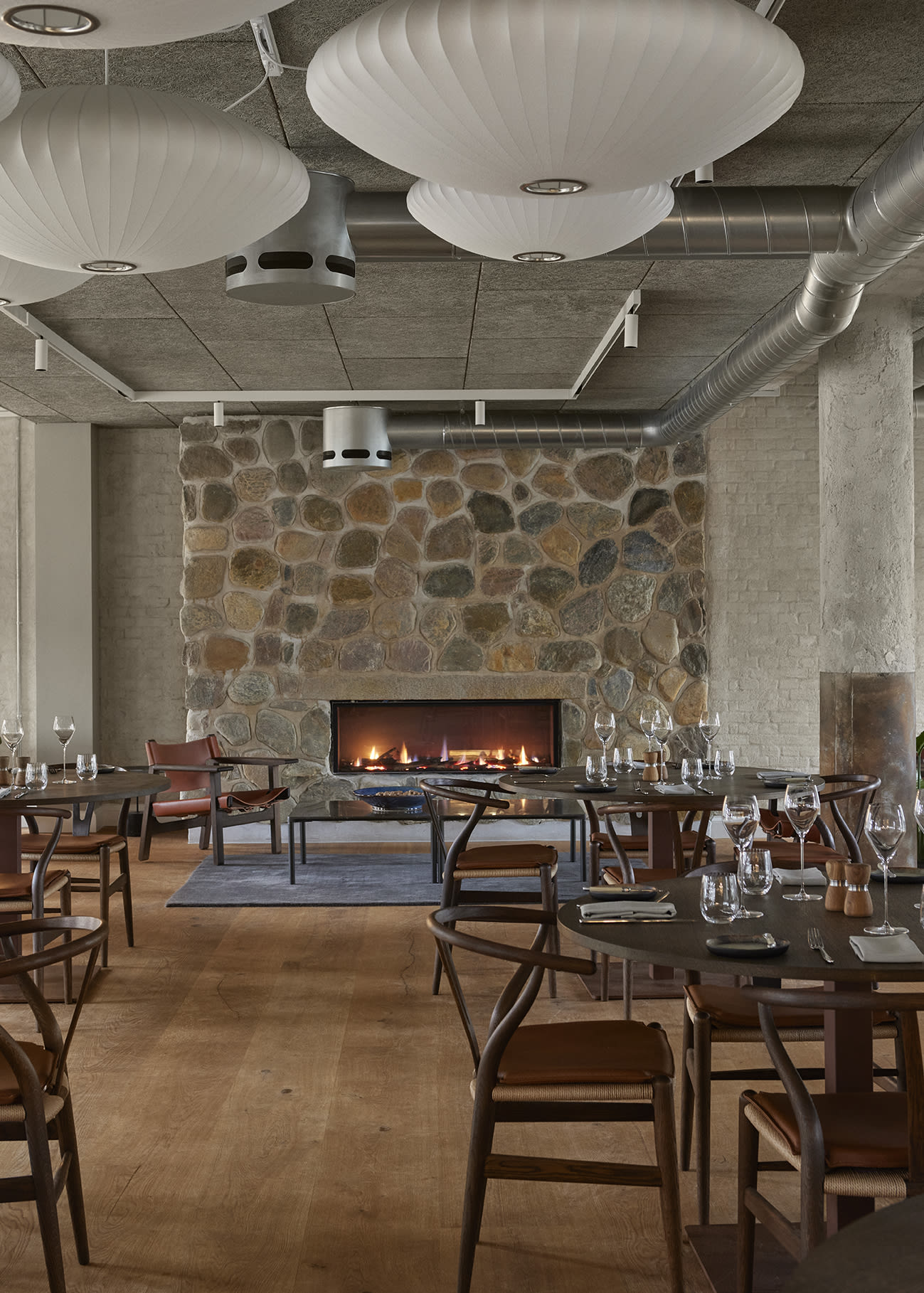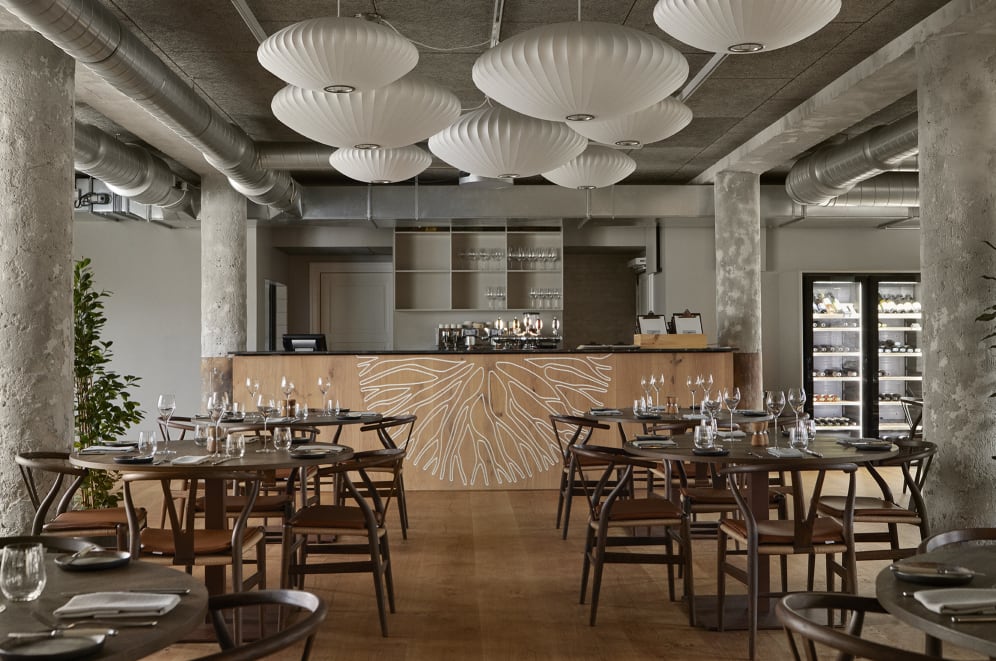
A newly developed area in Copenhagen Harbour has been nicknamed ‘Little Venice’ due to its many canals, which create a neighbourhood of small islands connected by bridges. This is where Pakhuset (The Warehouse) is found, a historical gem in the development of brand new residential buildings, terraced houses and commercial rental properties distributed on the 11 newly established manmade islands collectively called Engholmene (Meadow Islands).
The thoroughly renovated warehouse stands on a spacious lot on a peninsula, reminding us of its fascinating history, which dates back more than a century. As part of the restoration, Dinesen HeartOak plank floors were installed throughout the three-storey warehouse and the beautiful attic space, as a reference to the building’s own expression of robustness, durability and solidity.
Restoration, commercial property – Enghave Brygge, Copenhagen, Denmark
Architect: G.B. Hagen
Photographer: Claus Troelsgaard
_______________
HeartOak
Thickness: 22 mm. Width: 300 mm. Random lengths: 2–5 m.
Finish: Natural Oil
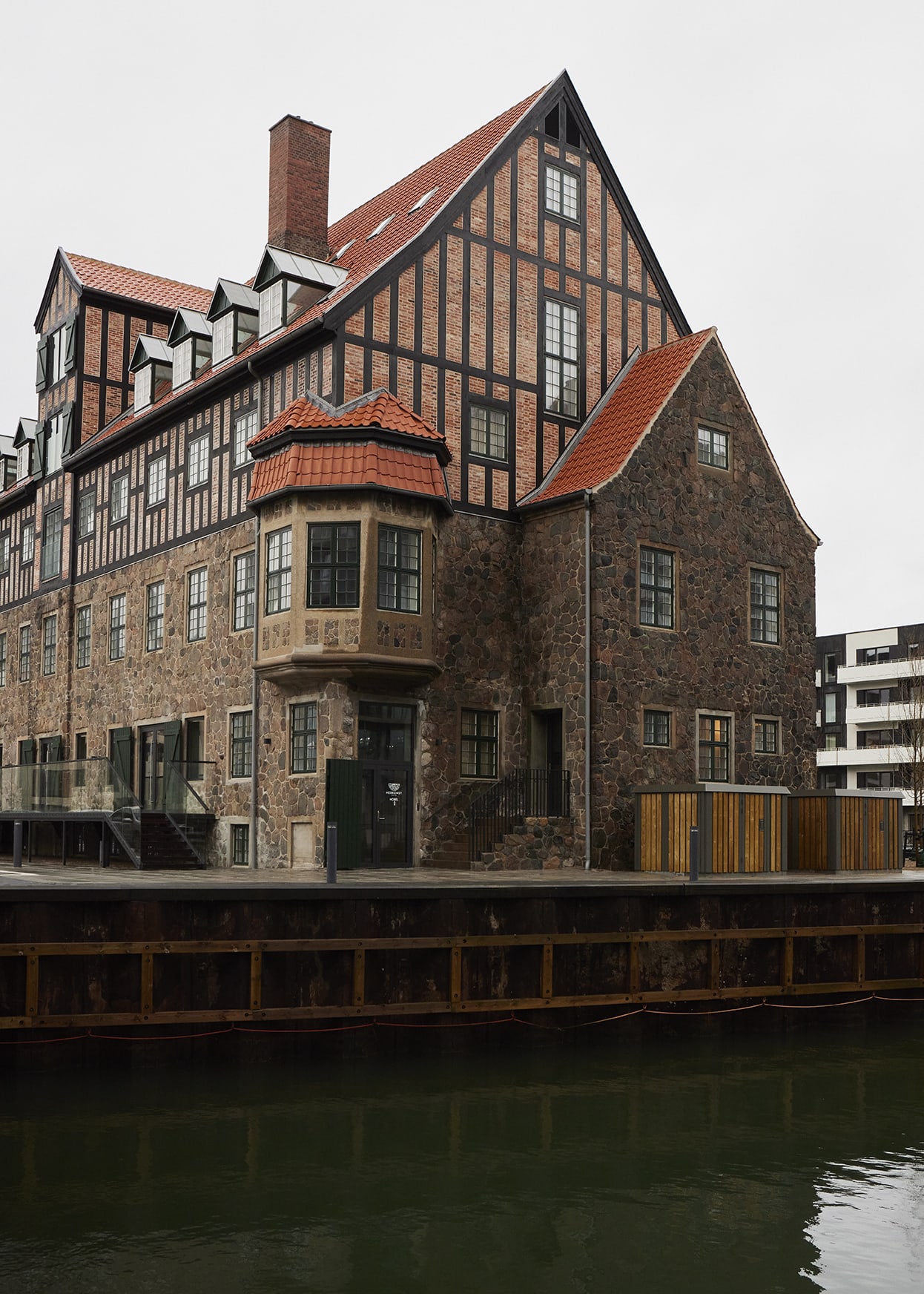
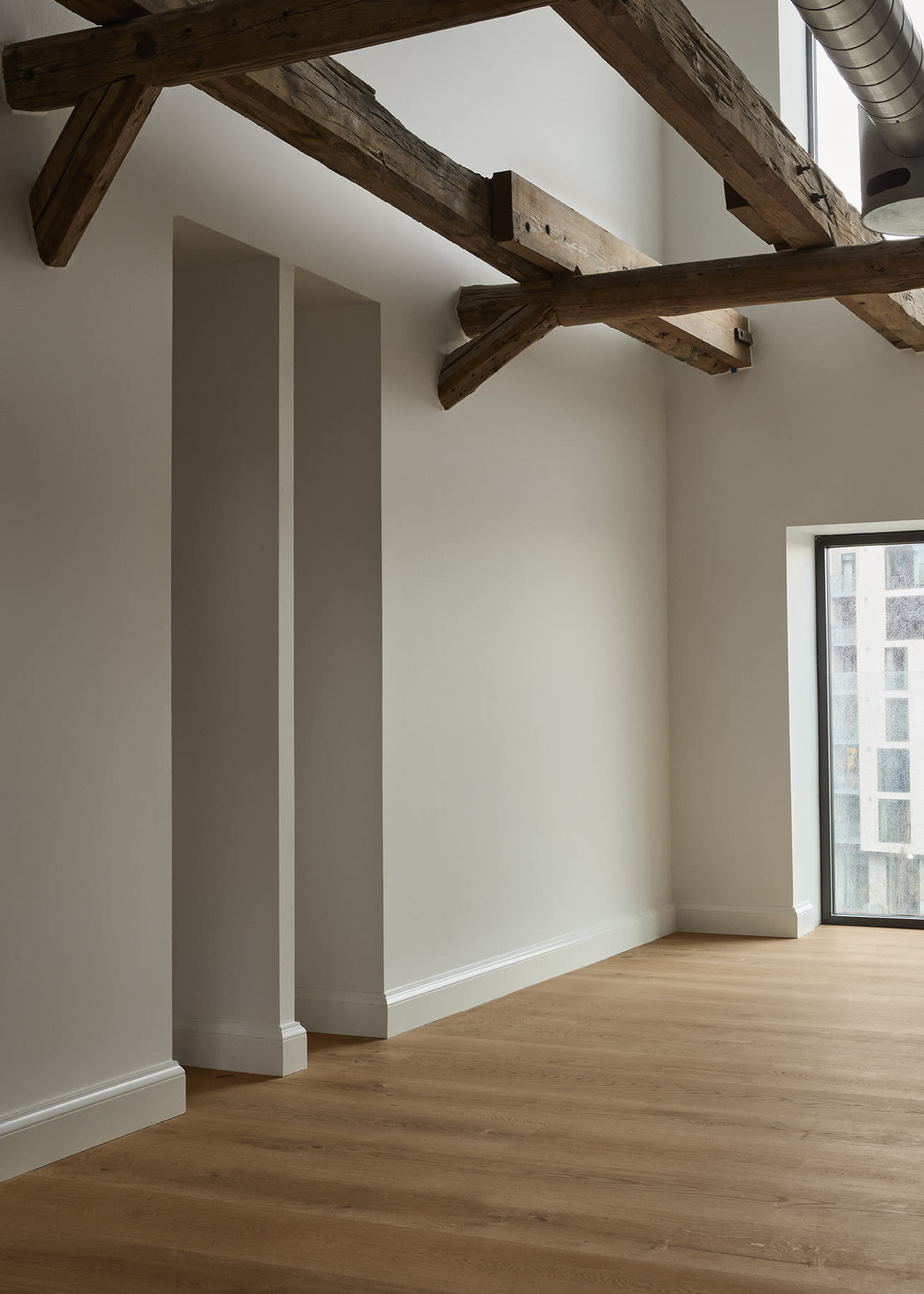
The warehouse was originally designed by architect G.B Hagen and built in 1918–20 for the scrap firm Petersen og Albeck. The building served as the headquarters, store and administration offices for Petersen og Albeck, later Uniscrap, which scrapped disused ships and train cars, among other activities. Hence, the area around the warehouse previously had large piles of scrap iron, and over time, the building had been used by fishermen, liquor smugglers, pirates and scrap merchants.
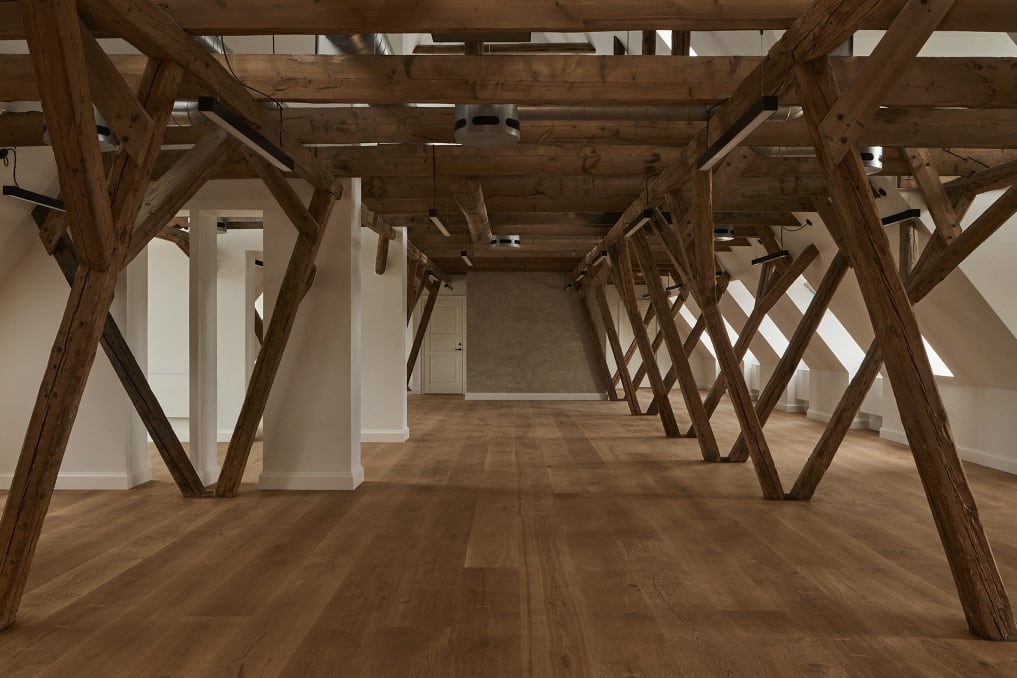
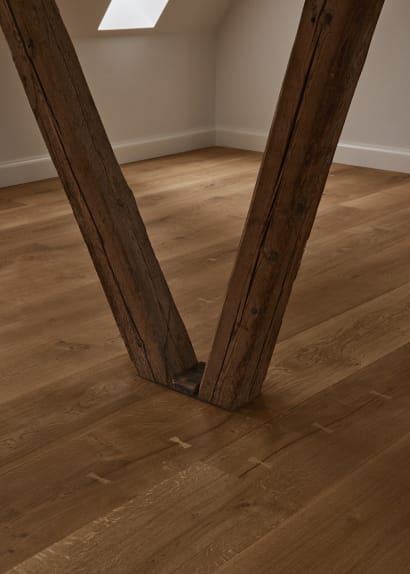
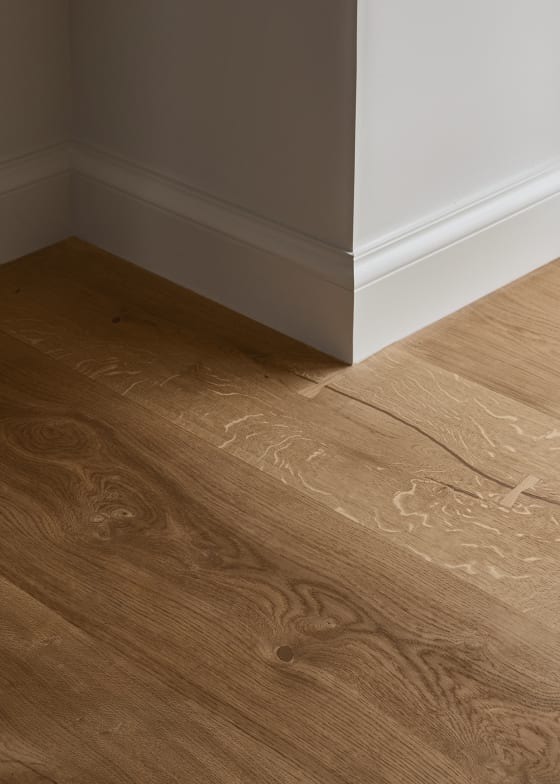
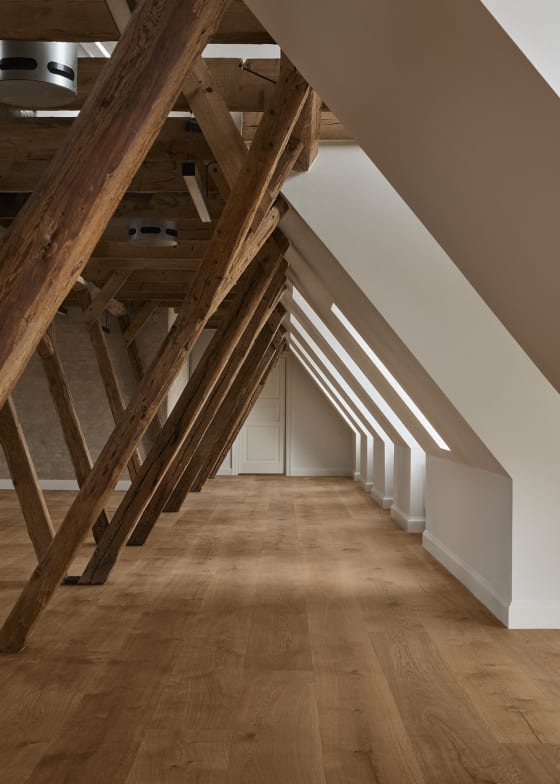
With this chequered history, it was only fitting that the warehouse made an appearance on the silver screen in the classic Danish film The Last Exploits of the Olsen Gang from 1974. In the film, the warehouse is used as the location for a scene in which the master criminal and gang leader Egon Olsen is placed with his feet in a bucket of cement and lowered into the harbour by a crane.
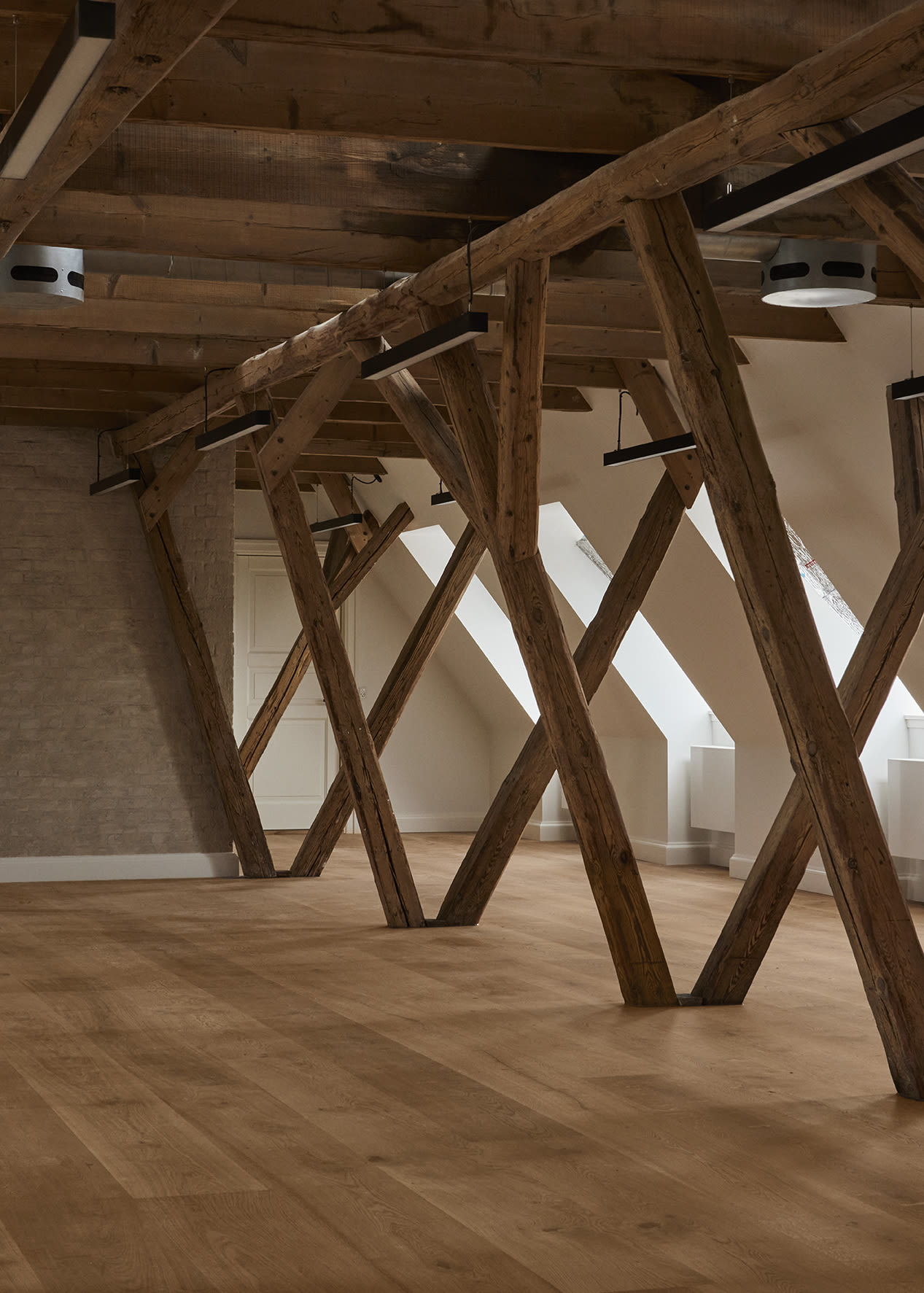
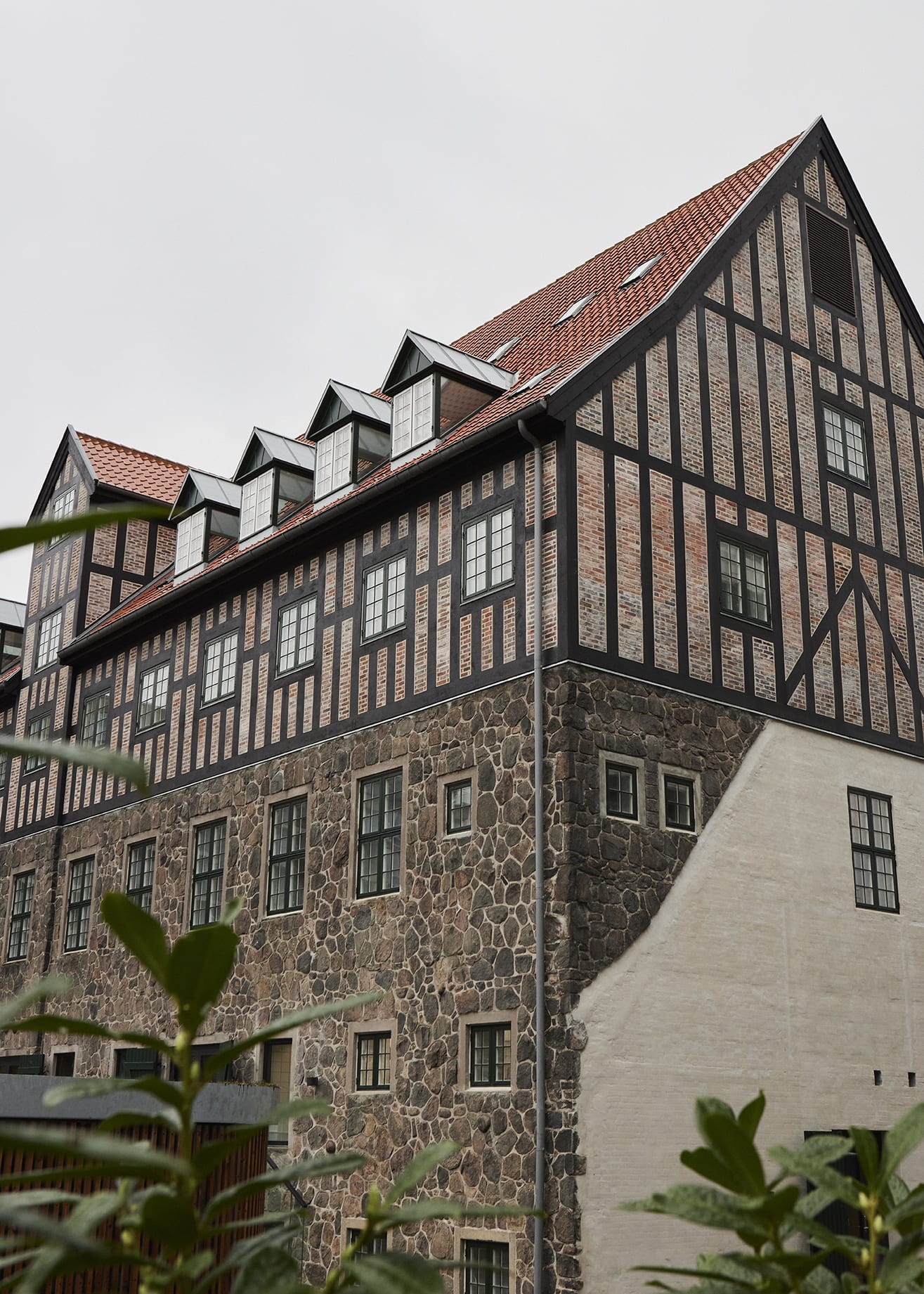
Today, the warehouse is considered an architectural gem. It has typical National Romantic features that set it apart from traditional industrial buildings. From outside, it appears almost unchanged, with its original half-timbered structure and stone wall and the characteristic red-tiled roof that is typical of Copenhagen’s old harbour warehouses. However, nothing is completely untouched.
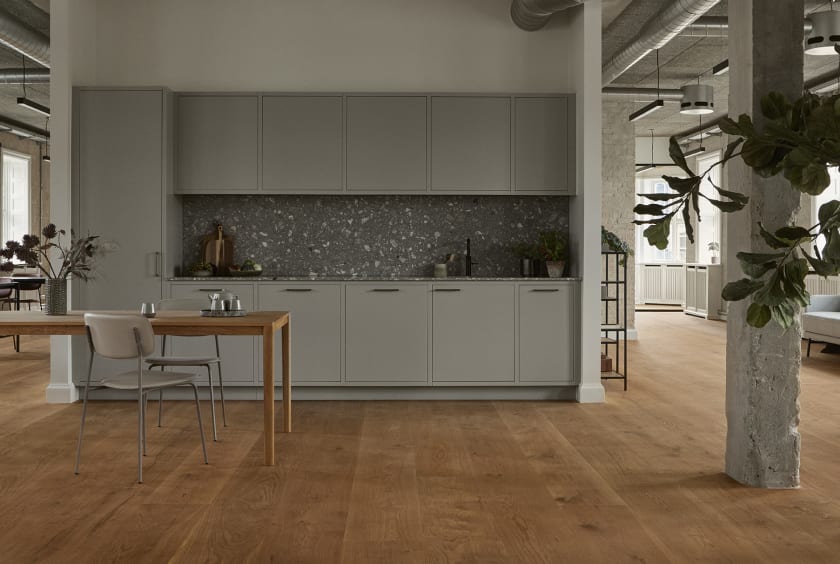
Every part of the building was carefully restored using durable quality materials that will preserve the structure for centuries. Thus, when it came to the floors, the obvious choice was Dinesen wood, which will last for generations. Dinesen HeartOak planks are made from the heart of old, strong oaks. The power and resilience of this material is combined with a beautiful design, including butterfly joints in oak to seal any naturally occurring cracks.
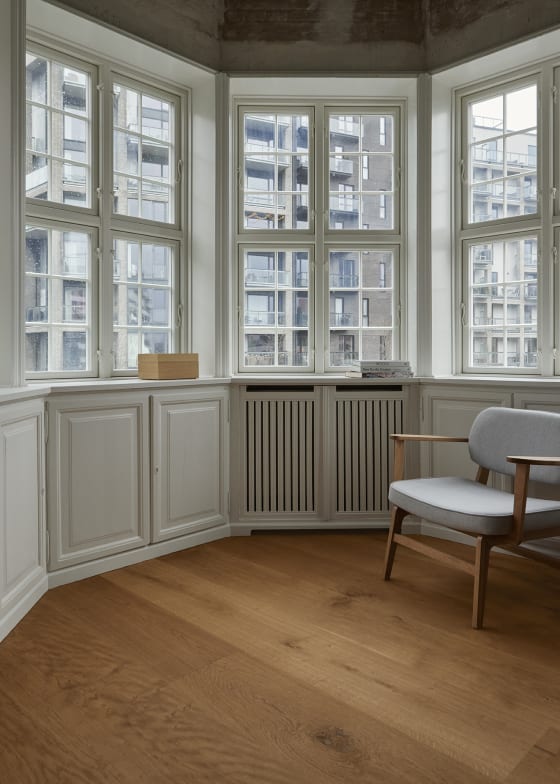
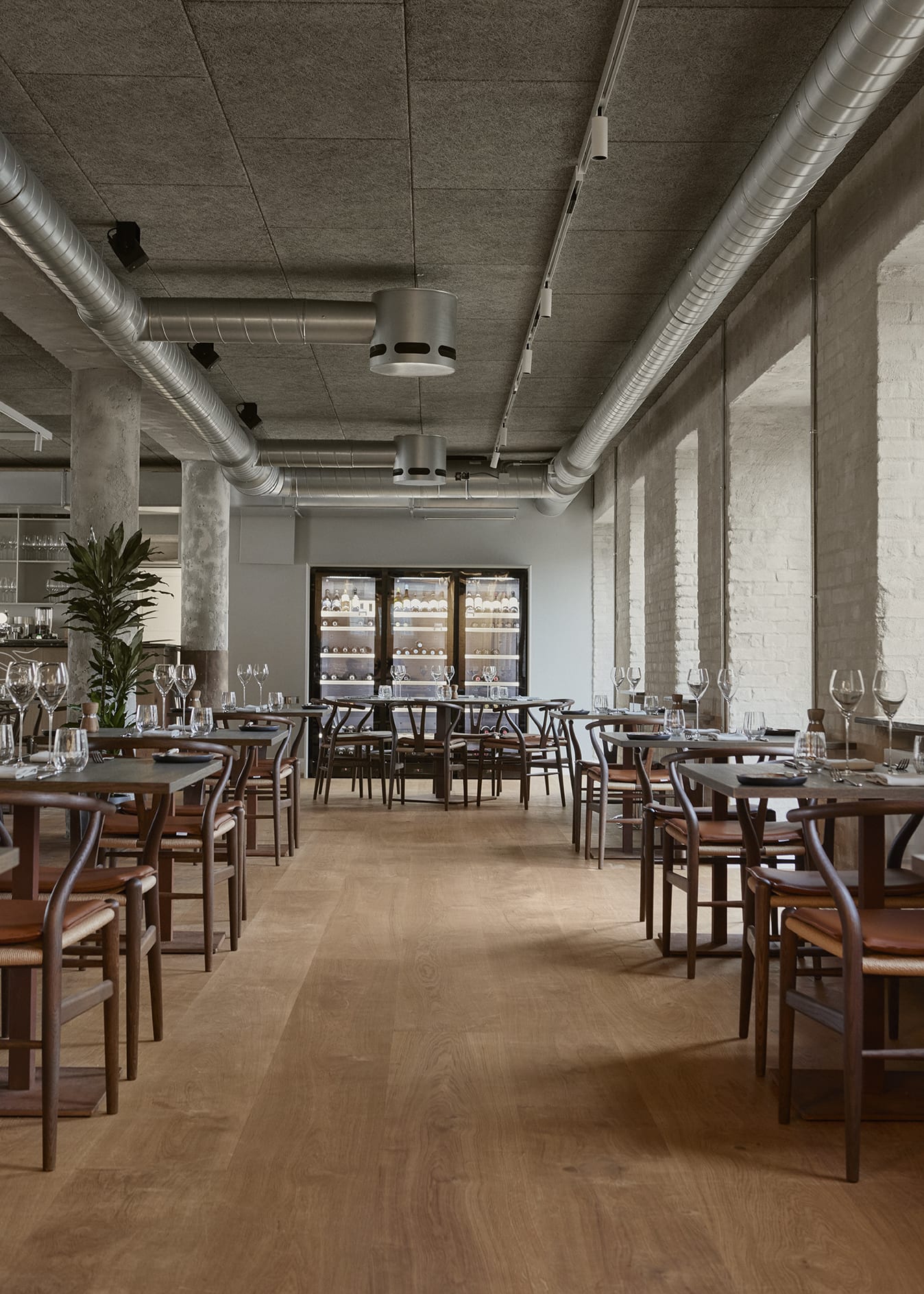
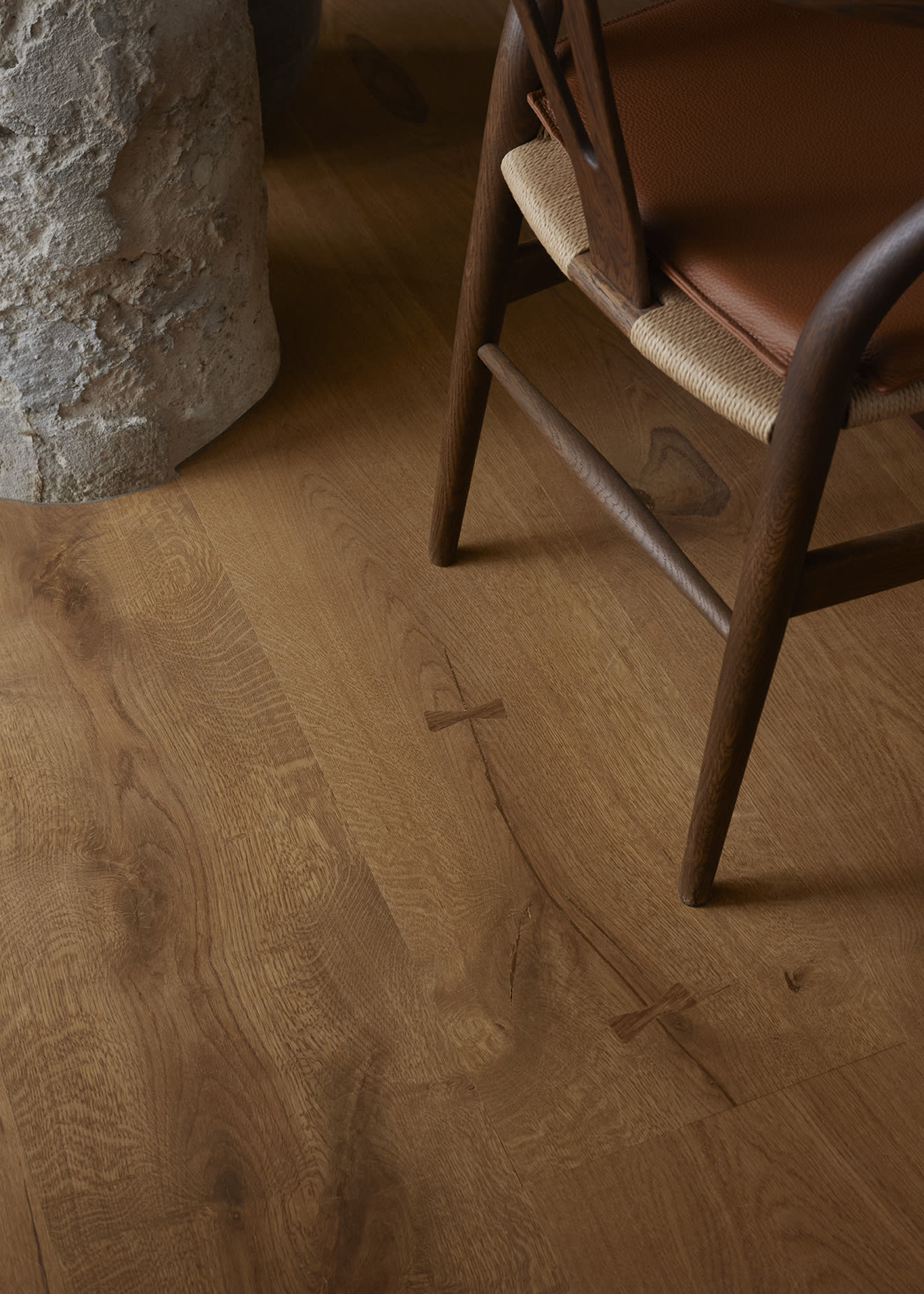
The basement and ground level of the building now house Nobel Bar and the Herkomst restaurant, which specializes in Nordic cuisine. It offers views of the canals as well as outdoor seating during the warmer months of the year. The top three floors, including the attic space, are used as office space. Out of respect for the original interior, the raw brick walls have been preserved, plastered in delicate colour shades in a harmonious interplay with the Natural Oil finish on the floors. In the attic space, the dark ceiling joists are exposed to show the original construction and allow for a cathedral ceiling with skylights.
